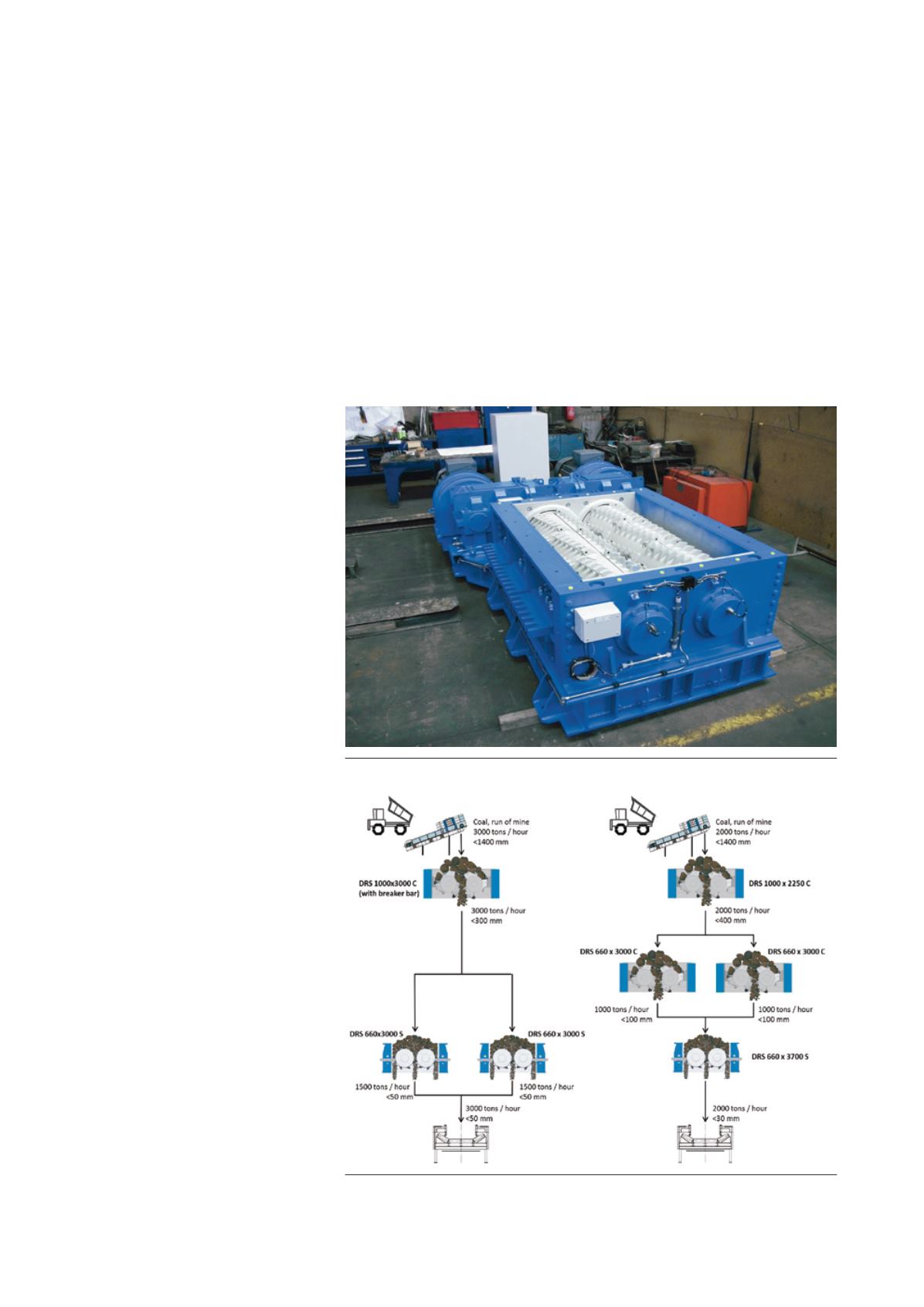
lowered using a rotation mechanism,
thus granting access to it’s crushing tools
for maintenance.
The exchangeable crushing picks and
the breaker bar are shown on Figure 4.
In heavy wear areas of the housing,
abrasion-resistant steel plates are
installed to increase the lifetime of the
RollSizer.
Secondary and tertiary
crushing
The DRS 660 series is used for secondary
and tertiary crushing. For the production
of final grain sizes of 30 – 80 mm, these
machines are configured as SideSizers,
which allow for the variation of the final
product size by an adjustment of the
lateral crushing comb. Due to the
accessibility of the crushing combs from
the outside of the housing, they can be
exchanged without removing the inlet
chute of the machine.
The capacity of SideSizers, for each
roller length, is higher than the capacity
of comparable CenterSizers, because the
material is processed in two crushing
gaps simultaneously. If the requested
overall reduction ratio from ROM
material to final grain size is too high, a
three‑stage crushing plant must be taken
into consideration. In this case, the
660 CenterSizer can be used as a
secondary crusher, providing a product
that enables a final product size of
30 mm or less after tertiary crushing. In
comparison to the 1000 series and
800 series, where the teeth of the rolls
can be exchanged separately, all
machines of the 660 series are designed
with casted crushing segments, carrying
several rows of teeth.
Heaviest wear occurs in the middle
of the rolls, because the material flow is
concentrated in this area. Due to the
symmetrical design of the crushing
segments, it is possible to switch the
segments with each other. If one
crushing segment is partly worn out, it
can be exchanged with the adjacent
segment, allowing the refurbishment of
the machine without using new
segments. This way the cost for wear
parts can be reduced by 50%. A typical
SideSizer with crushing segments is
shown in Figure 5.
RollSizers are supplied with all
necessary security and monitoring
devices to ensure safe and steady
operation. The speed of the rollers and
the temperature of the bearings are
measured continuously and the data can
be displayed in the control room. This
enables condition monitoring of all
important components of the machine.
Typical crushing concepts
Figure 6 illustrates two typical plant
concepts for coal crushing: the first
alternative shows a crushing plant with
a capacity of 3000 tph with an overall
reduction ratio of 28. To attain this
reduction ratio, a two stage crushing
process should be employed. The
crushing equipment consists of one
primary CenterSizer and two secondary
SideSizers. The primary crusher is a
DRS 1000 x 3000 C with the optional
breaker bar and produces a product size
of 300 mm. The secondary crushing is
done by two DRS 660 x 3000 S. Both
SideSizers produce 1500 tph with a final
product size of less than 50 mm.
The second concept shows a
three‑stage crushing plant consisting of
one primary CenterSizer, two secondary
Figure 5. SideSizer with crushing segments.
Figure 6. Different concepts of coal crushing plants.
July 2015
|
World Coal
|
47


